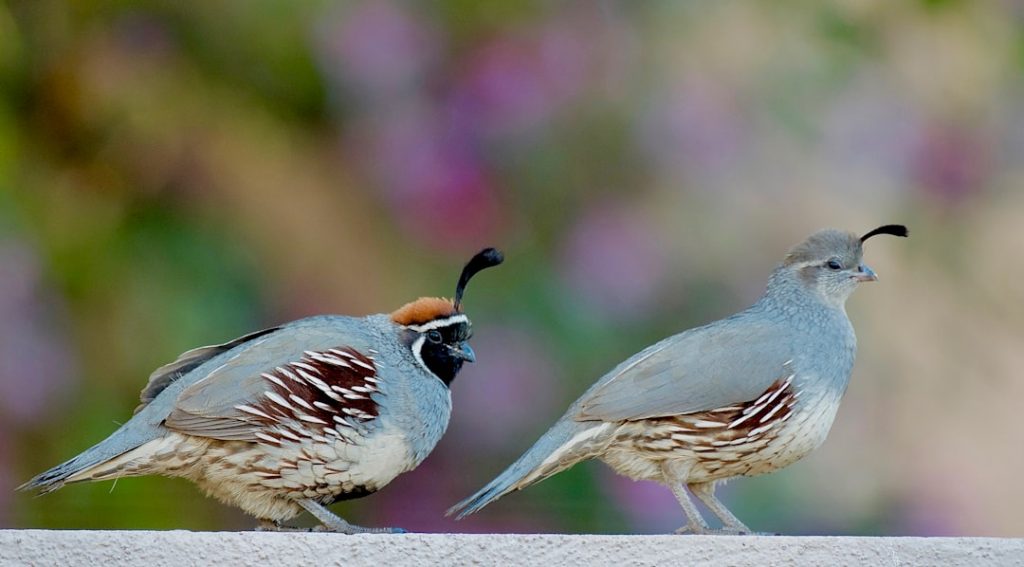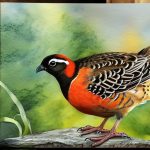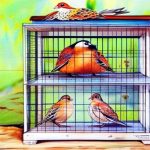Proper quail cage design is crucial for the health and well-being of the quail. The design of the cage directly impacts the comfort, safety, and productivity of the quail. A well-designed cage provides adequate space for the quail to move around, exercise, and exhibit natural behaviors. It also ensures proper ventilation, lighting, and temperature control to create a comfortable environment for the quail. Additionally, a good cage design facilitates easy access for feeding, watering, and cleaning, which is essential for maintaining the hygiene and health of the quail.
Furthermore, proper quail cage design is important for maximizing productivity in quail farming. A well-designed cage can optimize space utilization and allow for efficient management of the quail flock. It can also facilitate the collection of eggs and the monitoring of quail health and behavior. Ultimately, a properly designed quail cage can contribute to the overall success and profitability of a quail farming operation.
Table of Contents
- 1 Considerations for Quail Cage Design
- 2 Types of Quail Cages
- 3 Factors to Consider in Quail Breeding Cages
- 4 Tips for Designing Quail Breeding Cages
- 5 Common Mistakes to Avoid in Quail Cage Design
- 6 The Future of Quail Cage Design
- 7 FAQs
- 7.1 What are the key factors to consider when designing breeding quail cages?
- 7.2 What is the ideal size for breeding quail cages?
- 7.3 How should ventilation be incorporated into breeding quail cage design?
- 7.4 What are some important features to include in breeding quail cage design?
- 7.5 Are there any specific materials that are best for breeding quail cage construction?
Key Takeaways
- Proper quail cage design is important for the health and productivity of quail
- Considerations for quail cage design include space, ventilation, and ease of cleaning
- Types of quail cages include battery cages, colony cages, and enriched cages
- Factors to consider in quail breeding cages include size, material, and nesting areas
- Tips for designing quail breeding cages include providing adequate space and easy access for cleaning and maintenance
- Common mistakes to avoid in quail cage design include overcrowding and inadequate ventilation
- The future of quail cage design may involve more sustainable and environmentally friendly options
Considerations for Quail Cage Design
When designing quail cages, there are several important considerations to take into account. Firstly, the size of the cage is crucial. It should provide enough space for the quail to move around comfortably and exhibit natural behaviors such as dust bathing and wing flapping. The cage should also allow for easy access to feeders and waterers, as well as space for nesting boxes if breeding is a goal.
Ventilation is another critical consideration in quail cage design. Proper airflow is essential for maintaining good air quality and regulating temperature and humidity levels within the cage. Additionally, the material used for the cage should be durable, easy to clean, and resistant to corrosion and rust. It should also be designed to prevent any potential injuries to the quail, such as sharp edges or gaps that could trap their feet.
The design should also take into account the ease of maintenance and cleaning. A well-designed cage should allow for easy removal of waste and debris, as well as access to all areas of the cage for thorough cleaning and disinfection. Finally, the layout of the cages should be optimized for efficient management of the quail flock, with consideration given to factors such as feeding, watering, egg collection, and monitoring of quail health.
Types of Quail Cages
There are several types of quail cages that are commonly used in quail farming operations. One popular type is the battery cage system, which consists of multiple stacked cages that are typically made of wire mesh. This type of cage system allows for efficient use of space and easy management of a large number of quail. Another common type is the colony cage system, which provides a more natural environment for the quail by allowing them to live in groups within a larger enclosure.
There are also individual cages that are used for breeding purposes, providing each quail with its own separate living space. These cages are often equipped with nesting boxes to facilitate egg collection and breeding activities. Additionally, there are portable or mobile cages that can be moved around to allow the quail access to fresh pasture or forage.
Each type of cage has its own advantages and considerations in terms of design, management, and suitability for different purposes within a quail farming operation. The choice of cage type will depend on factors such as the scale of the operation, breeding goals, available space, and management practices.
Factors to Consider in Quail Breeding Cages
When designing quail breeding cages, there are specific factors that need to be taken into consideration to ensure the success of the breeding program. Firstly, the size of the breeding cages is important. They should provide enough space for each breeding pair to establish their territory and engage in courtship behaviors without feeling crowded or stressed. The cages should also have nesting boxes or areas where the female quail can lay their eggs in a secluded and comfortable environment.
The material used for breeding cages should be sturdy and provide privacy for the breeding pairs. It should also be easy to clean and disinfect to maintain a hygienic environment for the eggs and chicks. Additionally, the design should allow for easy access to collect eggs without causing disturbance to the breeding pairs.
Temperature control is another crucial factor in breeding cages. The design should allow for proper ventilation and insulation to maintain optimal temperature levels for egg incubation and chick rearing. The layout of the cages should also facilitate easy monitoring of breeding pairs and their offspring.
Finally, the design should take into account the safety and security of the chicks once they hatch. The cages should be designed to prevent any potential injuries or escapes, and provide a suitable environment for the chicks to grow and develop.
Tips for Designing Quail Breeding Cages
When designing quail breeding cages, there are several tips that can help ensure a successful breeding program. Firstly, it is important to provide enough space for each breeding pair to establish their territory and engage in courtship behaviors. This can help reduce stress and aggression within the breeding pairs, leading to better breeding success.
The design should also include nesting boxes or secluded areas where the female quail can lay their eggs in privacy. This can help reduce disturbances and increase egg production. Additionally, providing proper insulation and ventilation in the cages can help maintain optimal temperature levels for egg incubation and chick rearing.
It is also important to consider the ease of access for egg collection without causing disturbance to the breeding pairs. The material used for the cages should be durable, easy to clean, and provide privacy for the breeding pairs. Finally, providing a safe and secure environment for the chicks once they hatch is crucial. The design should prevent any potential injuries or escapes and provide suitable conditions for the chicks to grow and develop.
Common Mistakes to Avoid in Quail Cage Design

There are several common mistakes that should be avoided when designing quail cages. One common mistake is overcrowding the cages, which can lead to stress, aggression, and reduced productivity in the quail flock. It is important to provide enough space for the quail to move around comfortably and exhibit natural behaviors.
Another mistake is neglecting proper ventilation in the cage design. Inadequate airflow can lead to poor air quality, high humidity levels, and temperature fluctuations within the cage, which can negatively impact the health and productivity of the quail.
Using materials that are difficult to clean or prone to corrosion and rust is another mistake to avoid. The material used for the cages should be durable, easy to clean, and resistant to corrosion to maintain a hygienic environment for the quail.
Finally, neglecting proper temperature control in the cage design can lead to issues with egg production, incubation, and chick rearing. It is important to provide insulation and ventilation to maintain optimal temperature levels within the cages.
The Future of Quail Cage Design
The future of quail cage design is likely to see advancements in technology and innovation aimed at improving efficiency, sustainability, and animal welfare in quail farming operations. There may be developments in cage materials that are more sustainable, durable, and easy to clean, as well as advancements in ventilation systems that provide optimal air quality and temperature control within the cages.
There may also be a focus on designing cages that promote natural behaviors and welfare of the quail, such as providing more enrichment opportunities within the cages. Additionally, advancements in automation and monitoring systems may allow for more efficient management of quail flocks and breeding programs.
Furthermore, there may be an increased emphasis on sustainable practices in quail cage design, such as incorporating renewable energy sources for temperature control and waste management systems that minimize environmental impact.
Overall, the future of quail cage design is likely to see continued efforts towards improving animal welfare, productivity, and sustainability in quail farming operations through innovative and advanced cage designs.
If you’re interested in designing quail cages, you may also want to check out Poultry Wizard’s article on “How to Insulate a Chicken Coop.” Proper insulation is crucial for maintaining the health and comfort of your poultry, and this article provides valuable insights into creating a suitable environment for your birds. You can read the full article here.
FAQs
What are the key factors to consider when designing breeding quail cages?
When designing breeding quail cages, it is important to consider factors such as space requirements, ventilation, ease of cleaning, and the ability to separate males and females.
What is the ideal size for breeding quail cages?
The ideal size for breeding quail cages is typically around 24 inches in length, 24 inches in width, and 10 inches in height for a pair of quails. This allows for enough space for the quails to move around and nest comfortably.
How should ventilation be incorporated into breeding quail cage design?
Ventilation is crucial in breeding quail cage design to ensure proper air circulation and prevent the buildup of ammonia and other harmful gases. This can be achieved by incorporating mesh or wire panels into the cage walls to allow for airflow.
What are some important features to include in breeding quail cage design?
Important features to include in breeding quail cage design are removable trays for easy cleaning, nesting boxes for the female quails, and a divider to separate males and females when necessary.
Are there any specific materials that are best for breeding quail cage construction?
Breeding quail cages are commonly constructed using materials such as wire mesh, wood, and plastic. These materials are durable, easy to clean, and provide the necessary support for the quails.
Meet Walter, the feathered-friend fanatic of Florida! Nestled in the sunshine state, Walter struts through life with his feathered companions, clucking his way to happiness. With a coop that’s fancier than a five-star hotel, he’s the Don Juan of the chicken world. When he’s not teaching his hens to do the cha-cha, you’ll find him in a heated debate with his prized rooster, Sir Clucks-a-Lot. Walter’s poultry passion is no yolk; he’s the sunny-side-up guy you never knew you needed in your flock of friends!







